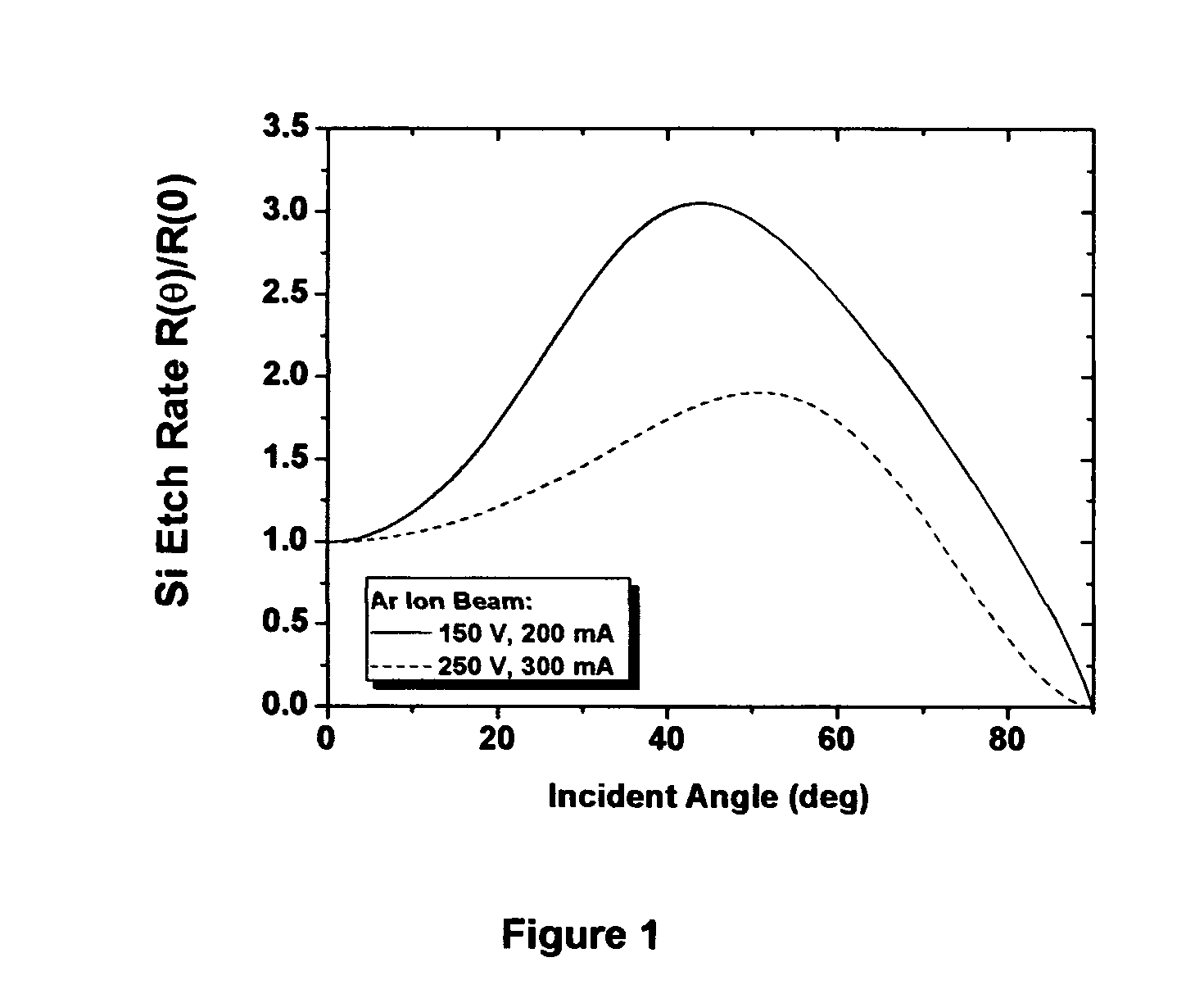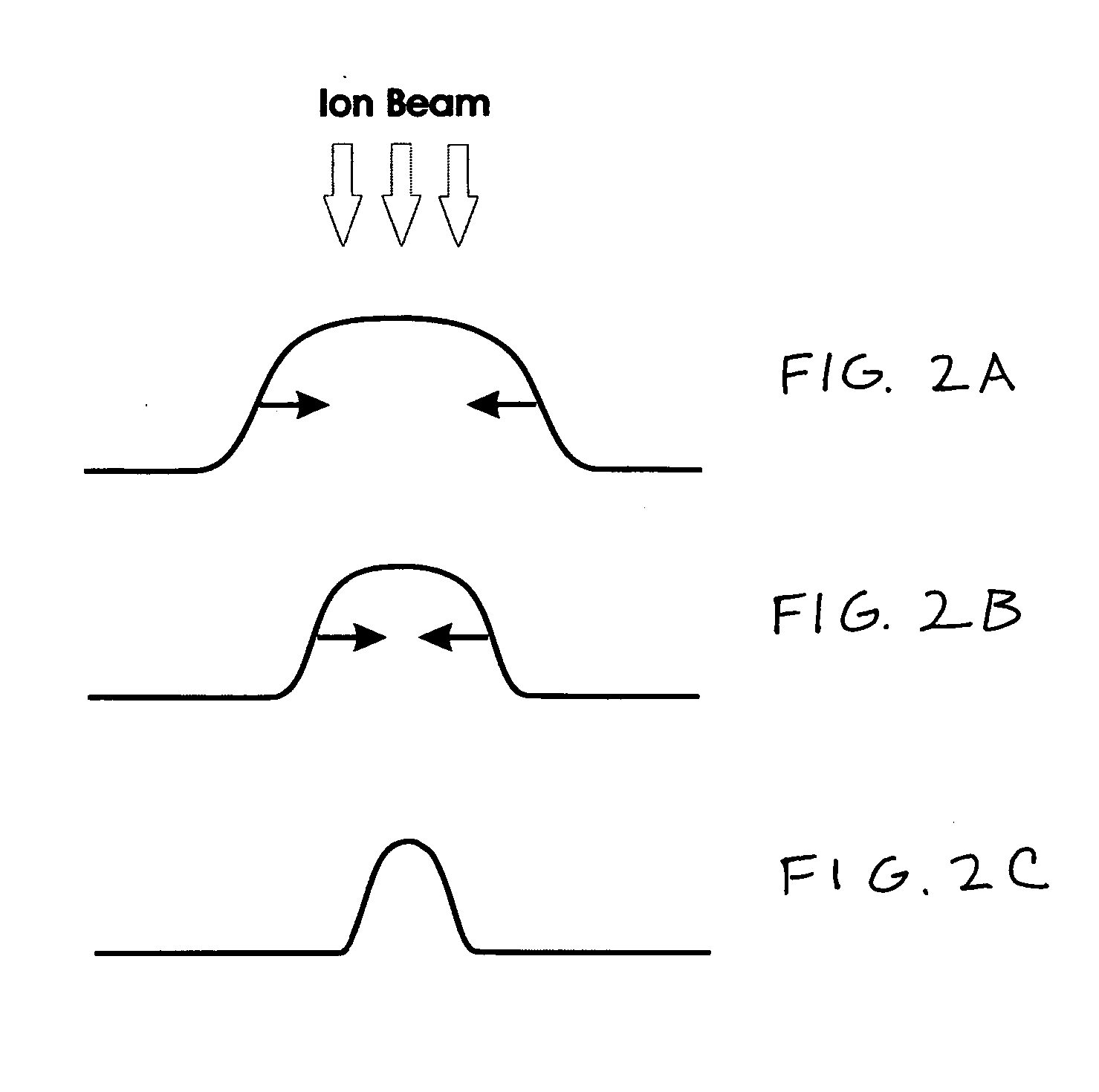Planarization of substrate pits and scratches
a technology applied in the field of planarization of can solve the problems of unacceptable critical defects in reflective mo/si multilayer coatings, no technique envisioned to repair multilayer phase defects originating from and does a mediocre job of planarizing substrate pits and scratches. , to achieve the effect of mitigating substrate scratches, enhancing pit and scratch planarization, and reducing the effect of pits
- Summary
- Abstract
- Description
- Claims
- Application Information
AI Technical Summary
Benefits of technology
Problems solved by technology
Method used
Image
Examples
Embodiment Construction
Planarization of Pits
[0029] An embodiment of the invention includes a method for planarizing pits and scratches on substrates, especially on EUVL mask substrates. Another embodiment further includes planarizing particles on a substrate. The process includes depositing a film on a substrate and etching the film at an angle of incidence away from normal incidence. In practice it is useful to repeat the deposition and etch steps in a periodic sequence to enhance the planarization process and suppress surface roughening. The key planarization mechanism in this process is shadowing, as illustrated in FIG. 4. Due to shadowing, the etch rate at the bottom of the pit or scratch is essentially zero. The large difference between the etch rates at the surface of the film and the bottom of the defect causes the depth of the defect to rapidly decrease.
[0030] In order to test the pit planarization process, substrates with suitable pit defects were obtained. Samples with 70 nm deep and wide pit...
PUM
| Property | Measurement | Unit |
|---|---|---|
| Angle | aaaaa | aaaaa |
| Angle | aaaaa | aaaaa |
| Angle | aaaaa | aaaaa |
Abstract
Description
Claims
Application Information
 Login to View More
Login to View More - R&D
- Intellectual Property
- Life Sciences
- Materials
- Tech Scout
- Unparalleled Data Quality
- Higher Quality Content
- 60% Fewer Hallucinations
Browse by: Latest US Patents, China's latest patents, Technical Efficacy Thesaurus, Application Domain, Technology Topic, Popular Technical Reports.
© 2025 PatSnap. All rights reserved.Legal|Privacy policy|Modern Slavery Act Transparency Statement|Sitemap|About US| Contact US: help@patsnap.com



